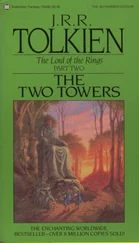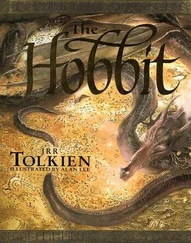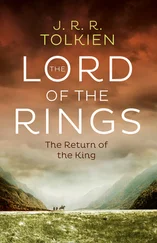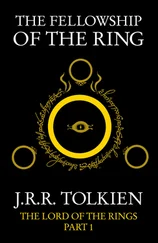John Tolkien - The Return of the King
Здесь есть возможность читать онлайн «John Tolkien - The Return of the King» весь текст электронной книги совершенно бесплатно (целиком полную версию без сокращений). В некоторых случаях можно слушать аудио, скачать через торрент в формате fb2 и присутствует краткое содержание. Жанр: Фэнтези, на английском языке. Описание произведения, (предисловие) а так же отзывы посетителей доступны на портале библиотеки ЛибКат.
- Название:The Return of the King
- Автор:
- Жанр:
- Год:неизвестен
- ISBN:нет данных
- Рейтинг книги:5 / 5. Голосов: 1
-
Избранное:Добавить в избранное
- Отзывы:
-
Ваша оценка:
- 100
- 1
- 2
- 3
- 4
- 5
The Return of the King: краткое содержание, описание и аннотация
Предлагаем к чтению аннотацию, описание, краткое содержание или предисловие (зависит от того, что написал сам автор книги «The Return of the King»). Если вы не нашли необходимую информацию о книге — напишите в комментариях, мы постараемся отыскать её.
The Return of the King — читать онлайн бесплатно полную книгу (весь текст) целиком
Ниже представлен текст книги, разбитый по страницам. Система сохранения места последней прочитанной страницы, позволяет с удобством читать онлайн бесплатно книгу «The Return of the King», без необходимости каждый раз заново искать на чём Вы остановились. Поставьте закладку, и сможете в любой момент перейти на страницу, на которой закончили чтение.
Интервал:
Закладка:
The Shire-folk introduced one small innovation of their own (eventually also adopted in Bree), which they called Shire-reform. They found the shifting of the weekday names in relation to dates from year to year untidy and inconvenient. So in the time of Isengrim II they arranged that the odd day which put the succession out, should have no weekday name. After that Mid-year's Day (and the Overlithe) was known only by its name and belonged to no week (I, 54). In consequence of this reform the year always began on the First Day of the week and ended on the Last Day; and the same date in any one year had the same weekday name in all other years, so that Shire-folk no longer bothered to put the weekday in their letters or diaries. 62 62 It will be noted if one glances at a Shire Calendar, that the only weekday on which no month began was Friday. It thus became a jesting idiom in the Shire to speak of 'on Friday the first' when referring to a day that did not exist. or to a day on which very unlikely events such as the flying of pigs or (in the Shire) the walking of trees might occur. In full the expression was 'on Friday the first of Summerfilth'.
They found this quite convenient at home, but not so convenient if they ever travelled further than Bree.
In the above notes, as in the narrative, I have used our modern names for both months and weekdays, though of course neither the Eldar nor the Dúnedain nor the Hobbits actually did so. Translation of the Westron names seemed to be essential to avoid confusion, while the seasonal implications of our names are more or less the same, at any rate in the Shire. It appears, however, that Mid-year's Day was intended to correspond as nearly as possible to the summer solstice. In that case the Shire dates were actually in advance of ours by some ten days, and our New Year's Day corresponded more or less to the Shire January 9.
In the Westron the Quenya names of the months were usually retained as the Latin names are now widely used in alien languages. They were: Narvinyë , Nénimë, Súlimë, Víressë , Lótessë , Nárië, Cermië, Urimë, Yavannië , Narquelië, Hísimë , Ringarë . The Sindarin names (used only by the Dúnedain) were: Narwain, Nínui, Gwaeron , Gwirith, Lothron, Nórui , Cerveth , Urui , Ivanneth , Narbeleth, Hithui , Girithron.
In this nomenclature the Hobbits, however, both of the Shire and of Bree, diverged from the Westron usage, and adhered to old-fashioned local names of their own, which they seem to have picked up in antiquity from the Men of the vales of Anduin; at any rate similar names were found in Dale and Rohan (cf. the notes on the languages, pp. 527-8). The meanings of these names, devised by Men, had as a rule long been forgotten by the Hobbits, even in cases where they had originally known what their significance was; and the forms of the names were much obscured in consequence: math, for instance, at the end of some of them is a reduction of month.
The Shire names are set out in the Calendar. It may be noted that Solmath was usually pronounced, and sometimes written, Somath ; Thrimidge was often written Thrimich (archaically Thrimilch) ; and Blotmath was pronounced Blodmath or Blommath. In Bree the names differed, being Frery, Solmath, Rethe, Chithing, Thrimidge, Lithe, The Summerdays, Mede, Wedmath, Harvestmath, Wintrìng, Blooting , and Yulemath. Frery , Chithing and Yulemath were also used in the Eastfarthing. 63 63 It was a jest in Bree to speak of 'Winterfilth in the (muddy) Shire'. but according to the Shire-folk Wintrìng was a Bree alteration of the older name, which had originally referred to the filling or completion of the year before Winter, and descended from times before the full adoption of Kings' Reckoning when their new year began after harvest.
The Hobbit week was taken from the Dúnedain, and the names were translations of those given to the days in the old North-kingdom, which in their turn were derived from the Eldar. The six-day week of the Eldar had days dedicated to, or named after, the Stars, the Sun, the Moon, the Two Trees, the Heavens, and the Valar or Powers, in that order, the last day being the chief day of the week. Their names in Quenya were Elenya, Anarya, Isilya, Aldúya, Menelya, Valanya (or Táríon ); the Sindarin names were Orgilion, Oranor, Orithil, Orgaladhad, Ormenel, Orbelain (or Rodyn).
The Númenoreans retained the dedications and order, but altered the fourth day to Aldëa (Orgaladh) with reference to the White Tree only, of which Nimloth that grew in the King's Court in Númenor was believed to be a descendant. Also desiring a seventh day, and being great mariners, they inserted a "Sea-day', Eärenya ( Oraearon ), after the Heavens' Day.
The Hobbits took over this arrangement, but the meanings of their translated names were soon forgotten, or no longer attended to, and the forms were much reduced, especially in everyday pronunciation. The first translation of the Númenorean names was probably made two thousand years or more before the end of the Third Age, when the week of the Dúnedain (the feature of their reckoning earliest adopted by alien peoples) was taken up by Men in the North. As with their names of months, the Hobbits adhered to these translations, although elsewhere in the Westron area the Quenya names were used.
Not many ancient documents were preserved in the Shire. At the end of the Third Age far the most notable survival was Yellowskin, or the Yearbook of Tuckborough. 64 64 Recording births. marriages and deaths in the Took families, as well as other matters. such as land-sales, and various Shire events.
Its earliest entries seem to have begun at least nine hundred years before Frodo's time; and many are cited in the Red Book annals and genealogies. In these the weekday names appear in archaic forms, of which the following are the oldest: (1) Sterrendei, (2) Sunnendei ,(3) Monendei, (4) Trewesdei, (5) Hevenesdei, (6) Meresdei, (7) Highdei . In the language of the time of the War of the Ring these had become Sterday, Sunday, Monday, Trewsday, Hevensday (or Hensday) , Mersday, Highday.
I have translated these names also into our own names, naturally beginning with Sunday and Monday, which occur in the Shire week with the same names as ours, and renaming the others in order. It must be noted, however, that the associations of the names were quite different in the Shire. The last day of the week. Friday (Highday), was the chief day, and one of holiday (after noon) and evening feasts. Saturday thus corresponds more nearly to our Monday, and Thursday to our Saturday. 65 65 I have therefore in Bilbo's song (I, 54-54) used Saturday and Sunday instead of Thursday and Friday.
A few other names may be mentioned that have a reference to time, though not used in precise reckonings. The seasons usually named were tuilë spring, lairë summer, yávië autumn (or harvest). Hrívë winter; but these had no exact definitions, and quellë (or lasselanta) was also used for the latter part of autumn and the beginning of winter.
The Eldar paid special attention to the 'twilight' (In the northerly regions), chiefly as the times of star-fading and star-opening. They had many names for these periods, of which the most usual were tindómë and undómë, the former most often referred to the time near dawn, and undómë to the evening. The Sindarin name was uial, which could be defined as minuial and aduial. These were often called in the Shire morrowdim and evendim. Cf. Lake Evendim as a translation of Nenuial.
Читать дальшеИнтервал:
Закладка:
Похожие книги на «The Return of the King»
Представляем Вашему вниманию похожие книги на «The Return of the King» списком для выбора. Мы отобрали схожую по названию и смыслу литературу в надежде предоставить читателям больше вариантов отыскать новые, интересные, ещё непрочитанные произведения.
Обсуждение, отзывы о книге «The Return of the King» и просто собственные мнения читателей. Оставьте ваши комментарии, напишите, что Вы думаете о произведении, его смысле или главных героях. Укажите что конкретно понравилось, а что нет, и почему Вы так считаете.












